The History of Philanthropies
The BYU Destiny Fund, the first permanent organization for raising philanthropic funds for charitable causes of The Church of Jesus Christ of Latter-day Saints, was launched in 1955. In 1971, the Church’s First Presidency commissioned a successor organization, Church Education Development (CED). This office sought private support for the Church’s institutions of higher learning, its seminary and institute programs, and its elementary and secondary school systems. In 1973, CED’s name was changed to Development Office of the Church, then to LDS Foundation in 1983. In 2005 the organization became LDS Philanthropies, followed by a further adjustment in 2019 that made the name The Church of Jesus Christ of Latter-day Saints—Philanthropies, or less formally, Philanthropies.
Since its beginning, Philanthropies’ mission and services have been continually shaped and refined in order to better serve the philanthropic needs of members and friends of the Church. Many of our milestones are included below.
1971
What
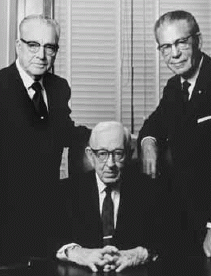
President N. Eldon Tanner creates a task force to address philanthropic issues in the Church. As a result of the task force’s work, the Church Education Development organization is created. Donald T. Nelson is named director of the Church Education Development Office.
Why
The task force is given the charge to recommend to the First Presidency the best organizational format for philanthropic work within the Church. The new organization is asked to report directly to the Church commissioner of education, Neal A. Maxwell. The charge to correlate prospective and actual donor contacts is given. Name clearance is implemented because various entities of the Church have been making uncorrelated requests for funds from the same people, causing ill feelings with the very people the Church Development Office would hope to have the best relationships with. Task force members include Neal A. Maxwell, chair; Donald T. Nelson, secretary; Ben E. Lewis and Kenneth E. Knapp, members.
1973
What
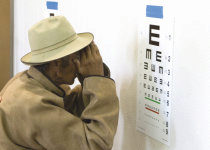
Church Education Development is renamed The Development Office of the Church.
Why
The renamed organization continues to report to the commissioner of education, Neal A. Maxwell. In addition to philanthropic efforts for Church educational units, the office begins development work for other Church programs, including:
Division of Health Services
Hospitals
Medical research and education
Medical services
Division of Education
Brigham Young University
Ricks College
Church College of Hawaii
Ensign College
Elementary and secondary schools
Institutes and seminaries
Division of Special Projects
Missionary program
Other special projects
1974
What
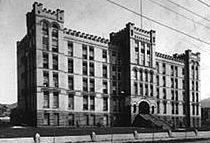
The Church divests itself of all its hospital operations.
Why
As the Church focuses more on its primary mission and purposes, development work for Church health organizations ceases.
1980
What
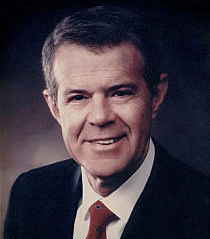
The reporting structure for the Development Office changes.
Why
The Development Office is asked to report directly to Elder Ronald E. Poelman, a member of the Seventy.
What
The Development Office budget methodology is changed.
Why

Prior to this time, development operations were financed from a pro rata assessment of unrestricted dollars raised for each institution. The Church now includes the Development Office in its annual budgeting process.
1981
What
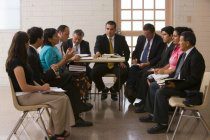
The Development Office reports indirectly to the Presiding Bishopric’s Office, and the Development Board is created.
Why
The Development Office is asked to report directly to J. Alan Blodgett, managing director of the Investments Department. The charge to correlate prospective and actual donor contacts is reemphasized. The name clearance concept is refined. The Development Board is formed to bring correlation, formal direction, and policy formation to philanthropic work within the Church. Functioning under the auspices of the board, the Gift Review Committee—which has functioned independent of any direct board supervision since 1971—is organized as the Gift Evaluation Committee.
1982
What
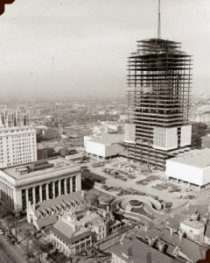
The Development Office of the Church is renamed LDS Foundation.
Why
The name LDS Foundation is chosen to describe the Church’s philanthropic organization. Its purposes are clarified in a letter from President Spencer W. Kimball and the First Presidency. The letter states that LDS Foundation’s purpose is to “encourage and facilitate voluntary philanthropic contributions to The Church of Jesus Christ of Latter-day Saints and its related organizations and activities, with primary fundraising emphasis relating to Church institutions of higher education.” The Foundation continues to report to the Presiding Bishopric through the Investments Department.
1986
What
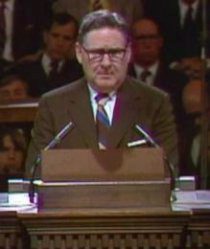
The reporting structure for LDS Foundation changes again.
Why
For the first time, LDS Foundation reports directly to the Presiding Bishop, Victor L. Brown.
1991
What

The Gift Review Committee is formed by the First Presidency. The new committee is chaired by a counselor in the Presiding Bishopric, Henry B. Eyring. The LDS Foundation Gift Evaluation Committee is dissolved.
Why
The Gift Review Committee is charged with supervision, oversight, and correlation of gift acceptance (tithes as well as philanthropic) for all Church institutions and departments, including educational institutions.
1994
What
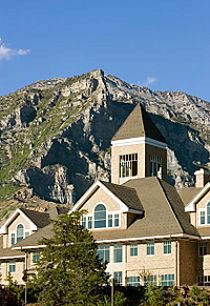
The BYU Board of Trustees approves going forward with a six-year $217 million major campaign. They later announce that BYU–Hawaii will be included in the campaign, and the fundraising goal is adjusted to $250 million.
Why
The quiet—or nucleus—phase of BYU’s campaign begins. The public-phase announcement is planned for 1996, after approximately 50 percent of funds are raised or committed by major donors. Ricks College’s fundraising efforts will span five years, formally beginning in 1995.
1996
What
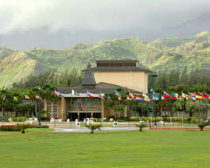
The public announcement and celebration of the BYU/BYU–Hawaii Campaign is held on April 11, 1996.
Why
With more than 50 percent of the dollar goal either raised or pledged, President Gordon B. Hinckley and Elder Henry B. Eyring, together with BYU president Merrill J. Bateman, BYU–Hawaii president Eric B. Shumway, volunteer campaign leaders, and major donors, announce the beginning of the public phase of the campaign. KBYU-TV and local Utah television stations cover the event.
1999
What
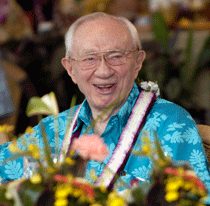
First Presidency Letter, April 12, 1999
BYU and BYU–Hawaii complete and exceed their combined campaign goal by 165 percent. Ricks College also concludes a six-year fundraising effort with record-setting results.
Why
Letter sent to ecclesiastical leaders of the Church to inform them of the role of LDS Foundation and Deseret Trust Company. BYU and BYU–Hawaii’s original combined campaign goal was $250 million (September 1993 through August 2000). The campaign is concluded eight months early in December 1999 with a record $411.7 million raised for approved priorities, 82 percent of which are funded. Ricks College completes their six-year effort with $25.9 million raised for their approved priorities, 97 percent of which are funded. The national average for funding featured priorities for these types of campaigns is 65 percent or less.
2000
What
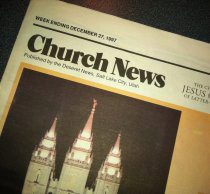
Church News article, February 5, 2000
Why
A major article appears in the Church News. The two-page piece explains the LDS Foundation and its role in assisting members and friends of the Church in making philanthropic gifts to the Church or its charities.
What
The LDS Foundation Advisory Board was approved by the First Presidency.
Why
The Development Board, created in 1981, is discontinued in 1993. The Presiding Bishopric recommends to the First Presidency that an advisory board be established to correlate fundraising activities among Church charities, review fundraising priorities, recommend a budget for human resource allocations, and review fundraising progress. Those appointed to this Board are:
Elder Henry B. Eyring, chair
Bishop Richard C. Edgley, vice chair
President Merrill J. Bateman, BYU
President Eric B. Shumway, BYU–Hawaii
President David A. Bednar, Ricks College (now BYU–Idaho)
President Stephen K. Woodhouse, LDS Business College (now Ensign College)
Elder L. Aldin Porter, senior president of the Seventy
M. McClain Bybee, director of LDS Foundation
Roger G. Christensen, CES associate commissioner of Education Administration and Finance
What

A fundraising professional is deployed to the Welfare Services Department (Deseret Industries and Humanitarian Services).
Why
In addition to the proactive fundraising being performed in behalf of the Church’s institutions of higher education, LDS Foundation deploys a fundraising professional to work with corporations and individuals who have the ability to philanthropically support humanitarian service projects worldwide.
What
A multitude of initiatives begin in order to strengthen the development effort. These initiatives include enhancing the prospect correlation system and deploying selected support staff.
Why
Under the direction of the LDS Foundation Directors Council, the directors implement:
- The LDS Foundation Donor Correlation Committee, which correlates, reviews, and approves the assignment of donor prospects to donor liaisons. Through periodic reports, the committee also tracks the initiatives that are implemented to build relationships.
- Selected LDS Foundation support staff, including communication support staff and donor liaison staff assistants, are deployed to BYU and Ricks College to provide direct, focused support.
What
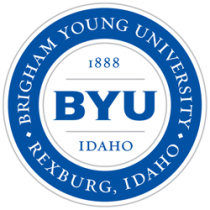
Ricks College becomes BYU-Idaho. LDS Foundation continues its fundraising support of this Church affiliated institution of higher education.
Why
Leaders of The Church of Jesus Christ of Latter-day Saints make a historic announcement: Ricks College becomes a four-year university and takes the name Brigham Young University–Idaho. A miraculous transformation is set in motion as the campus community works to fulfill the prophetic vision for the new university. In 2004, BYU–Idaho receives accreditation at the baccalaureate level by the Northwest Commission on Colleges and Universities.
What
At the end of BYU’s previous capital campaign, a very engaged committee of donor volunteers accepts President Merrill J. Bateman’s invitation to continue to advance the university as leading donors. These donors become the founding members of the President’s Leadership Council (PLC).
Why
University leadership sees the value of having an engaged group of enthusiastic alumni to help with outreach efforts. They encourage council members to attend council meetings, acquaint themselves with approved fundraising priorities, and develop friends for and encourage donations to the university. PLC members are also given the opportunity serve on college- or department-level advisory councils that are of personal interest to them and to have a direct impact on students through mentoring.
2001
What

LDS Foundation begins raising financial support for the Perpetual Education Fund (PEF).
Why
In April general conference, President Gordon B. Hinckley announces a new program, the Perpetual Education Fund, which will assist returned missionaries in developing countries around the world to receive education and gain employable skills.
2002
What

The Donor Philanthropic Inclination Model is implemented.
Why
All fundraising cultivation and solicitation activities are to be guided by the principles of the Philanthropic Inclination Model, which “empowers donors to freely express their philanthropic inclinations to donate their time, talents, and treasure to advance the cause of the Church and its related charities by supporting programs and projects approved to receive philanthropic donations.”
2003
What
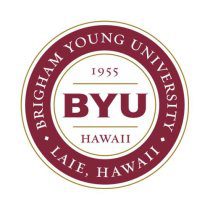
BYU-Hawaii becomes a separate institution of higher education in the LDS Church Educational System.
Why
On May 16, 2003, Elder Henry B. Eyring informs the BYU–Hawaii administration that the university will now report directly to the Board of Trustees instead of reporting to BYU in Provo. LDS Foundation manages the combined $20 million “Voyage of Faith Campaign” for BYU–Hawaii and the Polynesian Cultural Center.
What
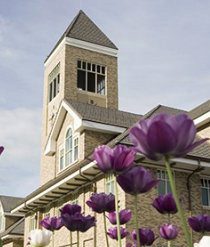
BYU establishes the Jesse and Amanda Knight Society.
Why
The Jesse and Amanda Knight Society is established to recognize alumni and friends who have named the university as a beneficiary (bequest) in their personal wills or living trusts, insurance policies, etc. The society holds a reunion on campus every year at which they meet with administrators, faculty, and students to be updated on the growth and development of the university.
2004
What
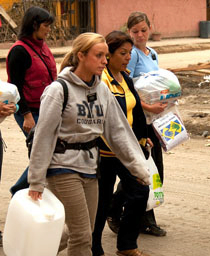
The mission and governing principles of LDS Foundation are reconfirmed.
Why
Under the direction of the LDS Foundation Advisory Board (chaired by Elder Henry B. Eyring) and the Presiding Bishopric, the foundational principles and processes are approved and made standards for fundraising correlation in the Church.
The two roles of the mission of LDS Foundation are 1) to assist members and friends of the Church in receiving the blessings associated with and linked to sacred covenants of giving; 2) to proactively invite members and friends of the Church to financially support programs and projects approved by “living oracles,” thereby accelerating the “building of the kingdom.”
The governing principles of LDS Foundation are 1) to empower donors to freely express their philanthropic inclinations to donate their time, talents, and treasure to advance the cause of the Church and its related charities by financially supporting programs and projects (fundraising priorities) approved by “living oracles”; 2) to empower employees acting as donor liaisons.
What
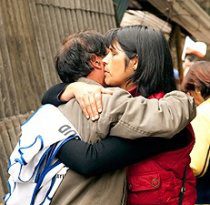
LDS Foundation responds to the emergency relief of the victims of the Southeast Asia Tsunami.
Why
LDS Foundation assists in facilitating donations from members and friends of The Church of Jesus Christ of Latter-day Saints worldwide for emergency relief of the victims of the Southeast Asia Tsunami. For the first time in history, many of these donations are made over the internet.
2005
What

LDS Foundation becomes LDS Philanthropies.
Why
The First Presidency renames LDS Foundation. The new name is LDS Philanthropies because this department of the Office of the Presiding Bishopric serves ALL Church-affiliated charities.
2007
What

The Church provides a new online Donor Advised Fund for members and friends of the Church.
Why
The Church of Jesus Christ of Latter-day Saints creates a new online Donor Advised Fund for members and friends of the Church and its affiliated charities. The fund is managed by Deseret Trust Company with the support and partnership of LDS Philanthropies. This is to make the advantages of a Donor Advised Fund available to members and friends of the Church.
2008
What
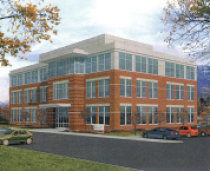
LDS Philanthropies receives a new home for its employees.
Why
The need for additional space and technological upgrades necessitated a new office facility to house LDS Philanthropies, built in Provo, Utah, by the Office of the Presiding Bishopric. The building is dedicated by President Henry B. Eyring, first counselor in the First Presidency of the Church, on May 16, 2008.
What
The Matthew Cowley Society is formed.
Why
The Matthew Cowley Society is established by BYU–Hawaii to recognize alumni and friends who have named the university as a beneficiary (bequest) in their personal wills, living trusts, insurance policies, etc. Plans call for the society to gather every year, at which time they will meet with administrators, faculty, and students to be updated on the growth and development of the university.
2009
What
The F.Y. and Anna Fox Society is formed.
Why
The F.Y. and Anna Fox Society is established by LDS Business College to recognize alumni and friends who have named the college as a beneficiary (bequest) in their personal wills, living trusts, insurance policies, etc. The society convenes annually to meet with administrators, faculty, and students to be updated on the growth and development of the university.
What
The composition of the Church’s Gift Review Committee is changed. Rather than a member of the Presiding Bishopric leading the committee, the managing director of finance and records now serves as chair and the associate general counsel for the Church acts as vice chair.
Why
The Gift Review Committee continues in its charge to supervise, oversee, and correlate gift acceptance (tithes as well as philanthropic) for all Church institutions and departments, including educational institutions. In addition to the chair and vice chair, other members of the committee include the director of finance, the manager of donations-in-kind, the assistant commissioner of the Church Educational System, the BYU advancement vice president, the director of real estate, a Church History representative, a Temple and Special Projects representative, the president of Deseret Trust Company, the LDS Philanthropies managing director, an LDS Philanthropies Gift Planning Services representative, and a Kirton & McConkie representative.
2011
What
An article on LDS Philanthropies appears in the Church’s Ensign magazine.
Why
The article “Blessed to Give,” published in the April 2011 Ensign, recounts how LDS Philanthropies blesses lives of both donors and recipients.
What
The BYU–Idaho Legacy Society is formed.
Why
The BYU–Idaho Legacy Society is established by BYU–Idaho to recognize alumni and friends who have named the university as a beneficiary (bequest) in their personal wills, living trusts, insurance policies, etc. The society joins together yearly, at which time they meet with administrators, faculty, and students to be updated on the growth and development of the university.
2012
What
President Thomas S. Monson announces a change in the minimum age for missionaries:18 years old for males and 19 years old for females.
Why
The missionary age change highlights the need for additional resources for the General Missionary Fund.
2013
What
Tanise Chung-Hoon is named managing director of LDS Philanthropies.
Why
Tanise Chung-Hoon becomes the first female managing director in the history of the Church.
What
The President’s Leadership Council at BYU–Hawaii adds two tiers for donor engagement: the David O. McKay Circle for donors who gift $1 million or more in a five-year period and the Genuine Gold Society for those who contribute $25,000 or more in a year.
Why
The Genuine Gold Society name echoes President David O. McKay’s description of students and honors the role donors play. President McKay is remembered for prophesying "from this school, I'll tell you, will go men and women whose influence will be felt for the good towards the establishment of peace internationally."
What
An $80 million fundraising project for a new Engineering Building at BYU begins. LDS Philanthropies coordinates and facilitates the fundraising efforts together with volunteer committee members—notably Jack and Charles Wheatley and King Husein—in association with campus leaders and alumni.
Why
The space available for BYU students requires an update to enhance learning and provide experiences that will prepare students to be leaders in their disciplines and to share the light of Christ throughout the world. The building is designed to enhance faculty-student collaboration, provide for team-based projects, facilitate cross-discipline interactions, enhance research, and promote industry partnerships. At University Conference, President Cecil O. Samuelson shares, “We believe engineering is not only a discipline in which the general need is greater than ever before, but it is also an area in which BYU can excel and contribute at an even higher level in the future than is possible currently.”
2015
What
The conclusion of the focused fundraising effort for the BYU Engineering Building is completed with the gathering of $80 million in donor funding. President Kevin J Worthen announces the success in the October BYU President’s Leadership Council meeting.
Why
The practice and policy for building projects is to have funds in place before the project begins.
2016
What
The First Presidency issues a letter dated January 20, 2016, introducing a document titled “Philanthropic Fundraising in the Church,” which is intended to help Church leaders, departments, and institutions understand the responsibilities related to fundraising in the Church.
Why
The document attached to the First Presidency letter reiterates that LDS Philanthropies is the only department of the Church authorized and commissioned to solicit and receive voluntary philanthropic contributions other than tithes and offerings.
What
BYU’s Inspiring Learning Initiative is announced by President Kevin J Worthen.
Why
The Inspiring Learning Initiative focuses the campus community’s attention on providing more experiential learning opportunities to students across campus. The accompanying emphasis is to raise $150 million in five years ($30 million each year) for student scholarships, mentorships, and internships at BYU.
What
A groundbreaking ceremony for the new BYU Engineering Building takes place on May 9, 2016.
Why
Donors who significantly contributed to the BYU Engineering Building are invited to celebrate and to participate in the formal start of the construction efforts.
2017
What
LDS Philanthropies adjusts its organizational structure to create a more functional service model. A new Principal Gifts team is formed as well as a Relationship Development group of teams that will focus on donor pipeline development.
Why
This new structure includes geographic assignments for donor liaisons and moves their priorities outside of specific BYU colleges. It focuses on service-team synergies and allows for better service opportunities that focus on less competition and on empowering donor inclination.
2018
What
The First Presidency approves new fundraising guidelines that (1) align higher-education fundraising requests with First Presidency priorities and established Church budgeting processes; (2) permit fundraising for direct student-aid and Board of Trustee consideration of certain additional higher-education requests and capital projects, but generally not for activities already included in appropriated budgets (tithing-based funding); and (3) allow for flexibility in fundraising targets (increases or decreases) based on annual approved priorities.
Why
LDS Philanthropies receives newly approved fundraising guidelines, including a renewed focus on inspiring giving experiences for donors. Organizational alignment also results in bringing staff previously housed at BYU, BYU–Hawaii, and BYU–Idaho to a central office in Provo. LDS Philanthropies refines its technology processes, training, and data and impact reporting for internal teams and builds a structured stewardship process for external audiences with its Marketing and Communications team. The department also simplifies its service model by organizing in geographic teams across all priorities and assigning dedicated managers. LDS Philanthropies formalizes and refines its portfolio development efforts and technology services (including aligning the web team) and adds a Leadership Giving team.
What
The organizational name is corrected, changing from LDS Philanthropies to The Church of Jesus Christ of Latter-day Saints Philanthropies—or more simply, the Philanthropies Department of The Church of Jesus Christ.
Why
This change aligns with the invitation from President Russell M. Nelson to use the correct name of the Church in all related entities, thus eliminating the use of LDS as a reference or acronym.
The Lord has impressed upon my mind the importance of the name He has revealed for His Church, even The Church of Jesus Christ of Latter-day Saints. We have work before us to bring ourselves in harmony with His will. In recent weeks, various Church leaders and departments have initiated the necessary steps to do so. Additional information about this important matter will be made available in the coming months (Russell M. Nelson, “The Name of the Church,” official statement, Aug. 16, 2018).
What’s in a name or, in this case, a nickname? When it comes to nicknames of the Church, such as the “LDS Church,” the “Mormon Church,” or the “Church of the Latter-day Saints,” the most important thing in those names is the absence of the Savior’s name. To remove the Lord’s name from the Lord’s Church is a major victory for Satan. When we discard the Savior’s name, we are subtly disregarding all that Jesus Christ did for us—even His Atonement. . . .
Our revised style guide is helpful. It states: “In the first reference, the full name of the Church is preferred: ‘The Church of Jesus Christ of Latter-day Saints.’ When a shortened [second] reference is needed, the terms ‘the Church’ or the ‘Church of Jesus Christ’ are encouraged. The ‘restored Church of Jesus Christ’ is also accurate and encouraged (Russell M. Nelson, “The Correct Name of the Church,” Ensign, October 2018; emphasis in original).
2019
What
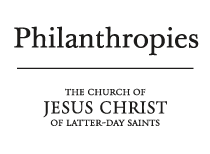
LDS Philanthropies becomes The Church of Jesus Christ of Latter-day Saints – Philanthropies.
Why
In an August 2018 official statement, President Russell M. Nelson says: “The Lord has impressed upon my mind the importance of the name He has revealed for His Church, even The Church of Jesus Christ of Latter-day Saints. We have work before us to bring ourselves in harmony with His will. In recent weeks, various Church leaders and departments have initiated the necessary steps to do so.”
To align with President Nelson’s direction, LDS Philanthropies is now renamed The Church of Jesus Christ of Latter-day Saints—Philanthropies, also known as the Philanthropies department of The Church of Jesus Christ of Latter-day Saints or, less formally, Philanthropies.
What
BYU–Pathway Worldwide formalizes the beginning of its President’s Leadership Council (PLC) with President Clark G. Gilbert.
Why
University leadership sees the value of having an engaged group of enthusiastic alumni to help with outreach efforts. They encourage council members to attend council meetings, acquaint themselves with approved fundraising priorities, and develop friends for and encourage donations to benefit the students of BYU–Pathway Worldwide. Opportunities are available for PLC members to provide jobs and internship opportunities to students.
2020
What
Organizational adjustment is made to further strengthen pipeline development and to formalize the need to focus on donors who are engaged in both annual and major gift efforts. Utilizing digital tools to teach and to thank allow more people to be served with a specific point-of-contact for gifts over the $1,000 benchmark.
Why
Leadership Giving and Prospect Development begin reporting to a single senior manager over pipeline development in order to create synergies between the two groups. Leadership Giving emphasizes a technology-based approach for their donor outreach to enable increased scale and reach. This is an ideal resource for donors in all parts of the world, particularly when the COVID-19 pandemic eliminates in-person gathering and meetings.
What
Philanthropies utilizes work-from-home efforts for the entire workforce over a period of several months, beginning March 17, 2020. The department also increases the use of technology for engagement efforts and prioritizes being safe, feeling safe, and acting safe in all interactions.
Why
To preserve the health and safety of employees and to follow government requirements for limits on gathering, employees work from home 100 percent from March 2020 through June 2021.
2021
What
One Work committees and director assignments are created to enhance cross-functional integration and unity. A focus on team development and building greater capacity facilitates scale and enhances service offerings and leadership preparation efforts.
Why
Managing director Tanise Chung-Hoon announces the creation of several new One Work committees, each to be chaired by one of four directors. The committee assignments for directors include the PLC Membership Committee, the PLC Meeting Committee, President’s Dinner and Legacy Gatherings, the Special Projects Committee, and the Campus Helpline.
2022
What
The Donor Outreach Center is launched at Philanthropies after approval from the Presiding Bishopric.
Why
After the elimination of the Telefund during the beginning of the COVID-19 pandemic in early 2020, Philanthropies proposed to the Presiding Bishopric the development of a Donor Outreach Center (DOC). The DOC uses digital channels for engagement—incorporating texting, crowdfunding, and video technologies—to offer more ways to meet donors in the spaces where they are most comfortable. The first outreach efforts using these new technologies are launched in 2022.
2023
What
Residence Week is instituted for all Philanthropies employees.
Why
Because many Philanthropies employees have hybrid work arrangements, department leaders recognize that there is significant value in gathering the workforce together from time to time and participating in intentional activities to build culture and strengthen Christ-centered efforts. In February, the first Residence Week takes place and includes small and large-group conversations focused on the Savior. Going forward, an entire week of in-office, purposeful activities will take place each year in February during the week of the annual Summit Series event. Quarterly half-day Residence Week Boosters will help maintain positive momentum.
What
BYU–Hawaii refreshes the President’s Leadership Council (PLC) and retires formal efforts with the Genuine Gold Society. A group of donor volunteers accepts President John “Keoni” S. K. Kauwe’s invitation to continue advancing the university as leading donors. These donors are reconfirmed as members of the BYU–Hawaii PLC.
Why
University leadership sees the value of having an engaged group of enthusiastic alumni to help with outreach efforts. They encourage council members to attend council meetings, acquaint themselves with approved fundraising priorities, and develop friends for and encourage donations to the university. PLC members are also given the opportunity to have a direct impact on students through mentoring.
What
BYU–Idaho formalizes two giving and donor engagement opportunities. President’s Leadership Council and the Signature Scholarship program begin.
A group of donor volunteers accept President Alvin F. “Trip” Meredith’s invitation to continue advancing the university as leading donors and join the President’s Leadership Council. The benchmark commitment for the PLC is $1 million over a five-year period.
The Signature Scholarship program includes opportunities to create a currently spendable named scholarship in support of university priorities (need, merit, missionary, and general scholarships). The commitment is a gift of $10,000 (which can be a named scholarship) to fund two students for two semesters, generally for a four-year period. The goal is to gather 440 Signature Scholarship commitments to support 1 percent of the maximum student body.
Why
University leadership sees the value of having an engaged group of enthusiastic alumni to help with outreach efforts. They encourage council members to attend council meetings, acquaint themselves with approved fundraising priorities, and develop friends for and encourage donations to the university. Opportunities are available for PLC members to mentor BYU–Idaho students.
Signature Scholarship donors are able to honor a name that is meaningful to them while also supporting students. Donors engage annually with scholarship recipients at a celebration luncheon and mentoring experience.